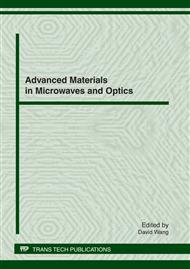[1]
J.H. Dautzenberg, The Minimum Energy Principle for the Cutting Process in Theory and Experiments. Annals of the CIRP, 32, (1983), pp.223-227.
Google Scholar
[2]
M. Džupon, J. Jurko, M. Gajdoš, M. Ferdinandy, D. Jakubeczyová, Plastic Deformation Around Holes Drilled in Austenitic Steel 1. 4301. Chemické listy, Vol. 105, (S), (2011), ISSN 0009-2770 pp.606-608.
Google Scholar
[3]
J. Jurko, M. Džupon, A. Panda, M. Gajdoš, I. Pandová, Deformation of Material Under the Machined Surface in the Manufacture of Drilling Holes in Austenitic Stainless Steel. Chemické listy, Vol. 105, (S), (2011), ISSN 0009-2770, pp.600-602.
Google Scholar
[4]
J. Jurko, A. Panda, M. Gajdoš M., Accompanying phenomena in the cutting zone machinability during turning of stainless steels. International Journal Machining and Machinability of Materials, INDERSCENCE Publisher, ISSN 1748-5711, Vol. 5, No. 4, (2009).
DOI: 10.1504/ijmmm.2009.026899
Google Scholar
[5]
J. Jurko, Monitoring and Diagnosis of Drill Wear and the Thermodynamic Phenomenas of Material Removal by drilling of Stainless Steels. Book: Experimental Analysis of Nano and Engineering Materials and Structures. Springer Netherlands, ISBN 978-1-4020-6239-1 , (2007).
DOI: 10.1007/978-1-4020-6239-1_37
Google Scholar
[6]
J. Jurko, The use of TiAlN Coated Carbide Tool when Finish Drilling of Stainless Steel X4Cr17Ni8TiN. International Journal Applied Mechanics and Materials, Vol. 39, No. V (2010, ) pp.369-374.
DOI: 10.4028/www.scientific.net/amm.39.369
Google Scholar
[7]
J. Jurko, A. Panda, M. Gajdoš, Study of changes under the machined surface and accompanying phenomena in the cutting zone during drilling of stainless steels with low carbon content. Metalurgia, Vol. 50, No. 2, (2011), ISSN 0543-5846 , pp.113-117.
DOI: 10.1109/icacte.2010.5579026
Google Scholar
[8]
Š. Markulik, A. Tompoš, Overovanie technického stavu dvojkotúčovej brúsky Extol. In: Spravodaj ATD SR, 1, (2008), pp.24-25.
Google Scholar
[9]
M. Martinkovič, Comparison of plastic deformation and grain boudaries orientation of steel. Dev. of Mat. Sci. in Res. and Educ. DMS-RE, (2009), pp.50-51.
Google Scholar
[10]
I. Mrkvica, V. Ochodek, R. Konderla, Influence of a Tool Geometry on Surface Tension of a Workpiece. International Journal Manufacturing Technology, 8 (2009), pp.76-79.
Google Scholar
[11]
A. Panda, J. Jurko, M. Džupon, I. Pandová, Optimalization of Heat Treatment Bearings rings With Goal to Eliminate Deformation of Material. Chemické listy, Vol. 105, (S), (2011), ISSN 0009-2770, pp.459-461.
Google Scholar
[12]
E. Usui, A. Hirota, Analytical Prediction of Three Dimensional Cutting Process. Part 2-Chip formation and Cutting Forces with Conventional Single-Point Tool. Journal of engineering for industry, 100, 2, (1978), pp.236-243.
DOI: 10.1115/1.3439414
Google Scholar
[13]
D. Wei Yen, P.K. Wright, A Remote Temperature Sensing Technique for Estimating the Cutting Interface Temperature. Journal of engineering for industry, 113, (1986), pp.251-264.
DOI: 10.1115/1.3187075
Google Scholar


